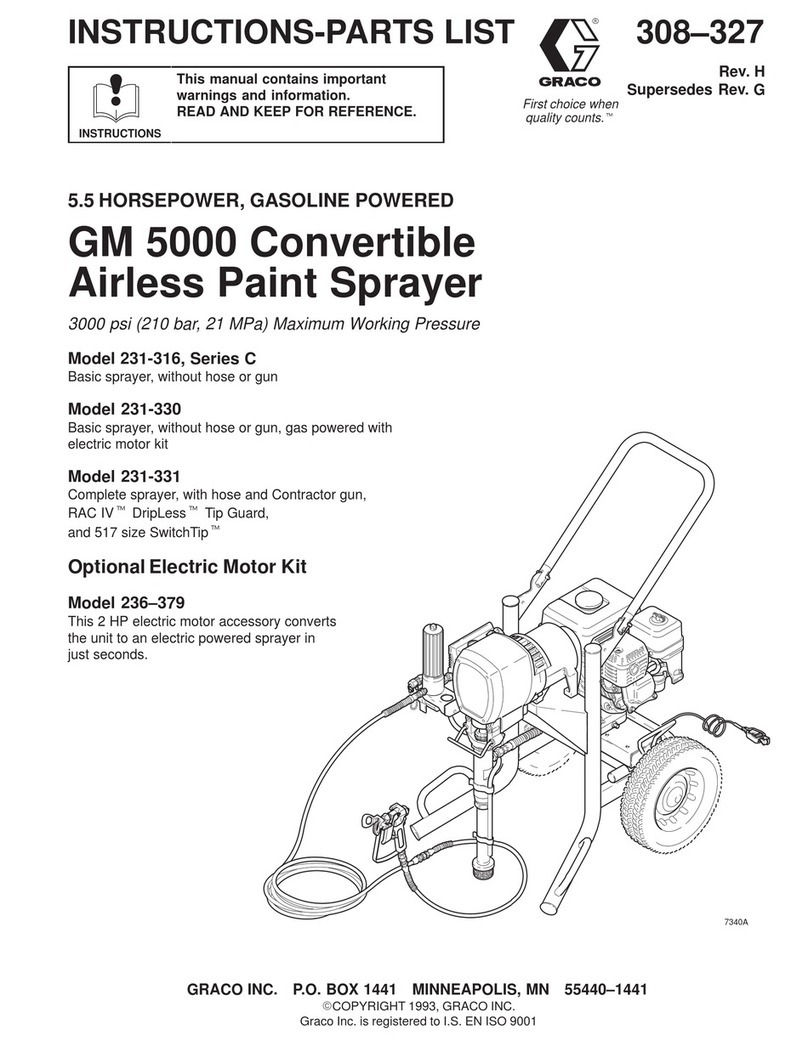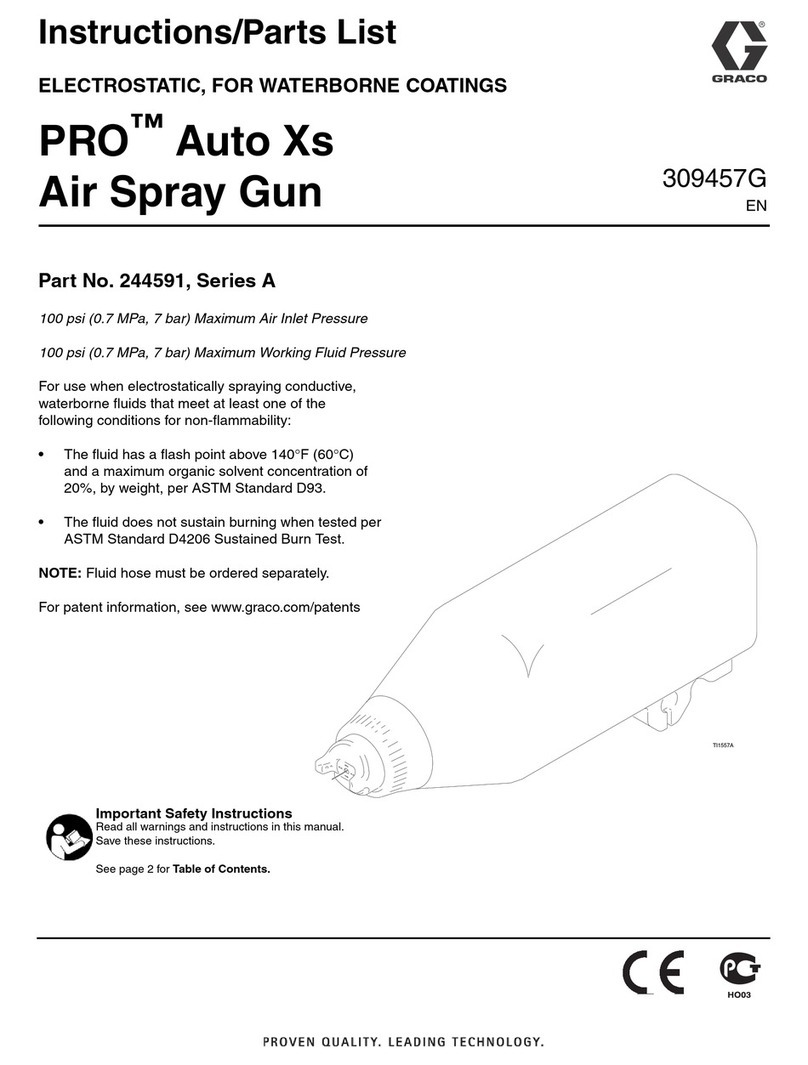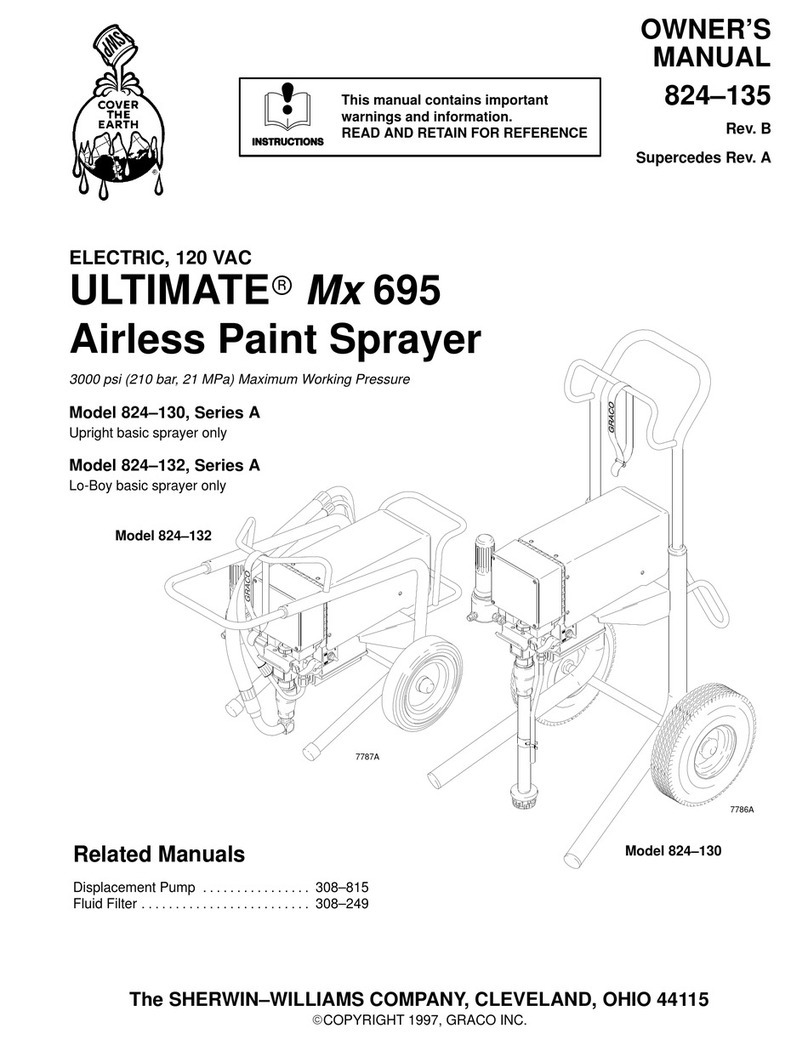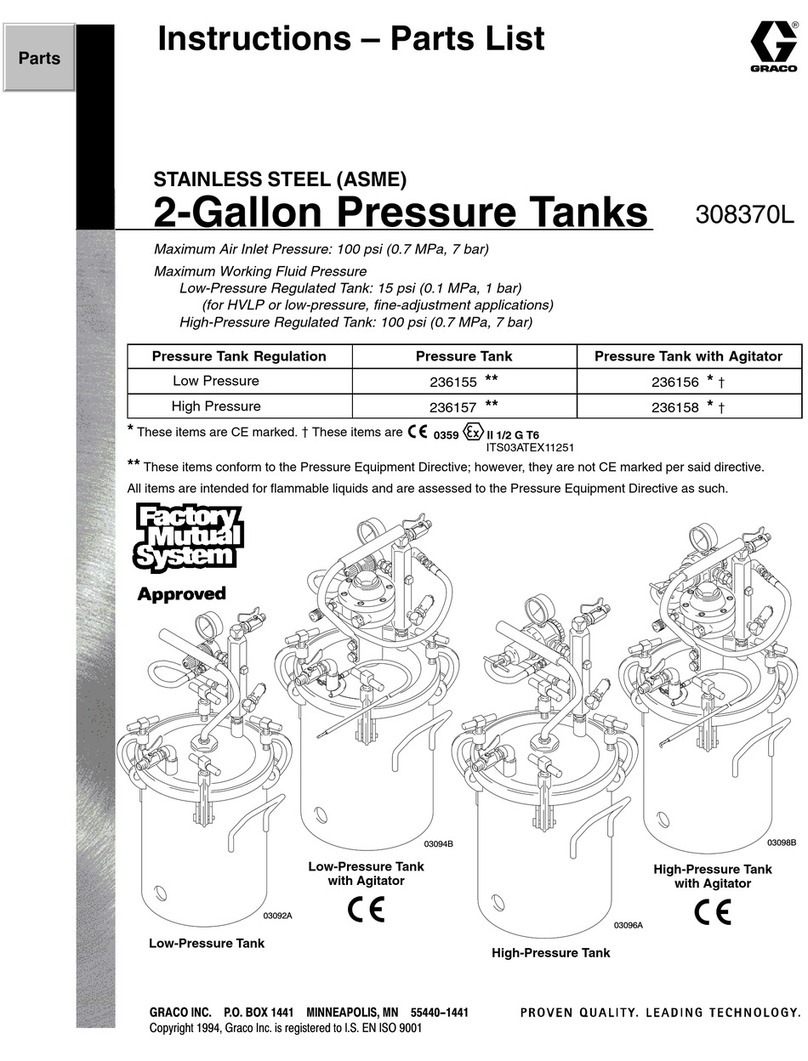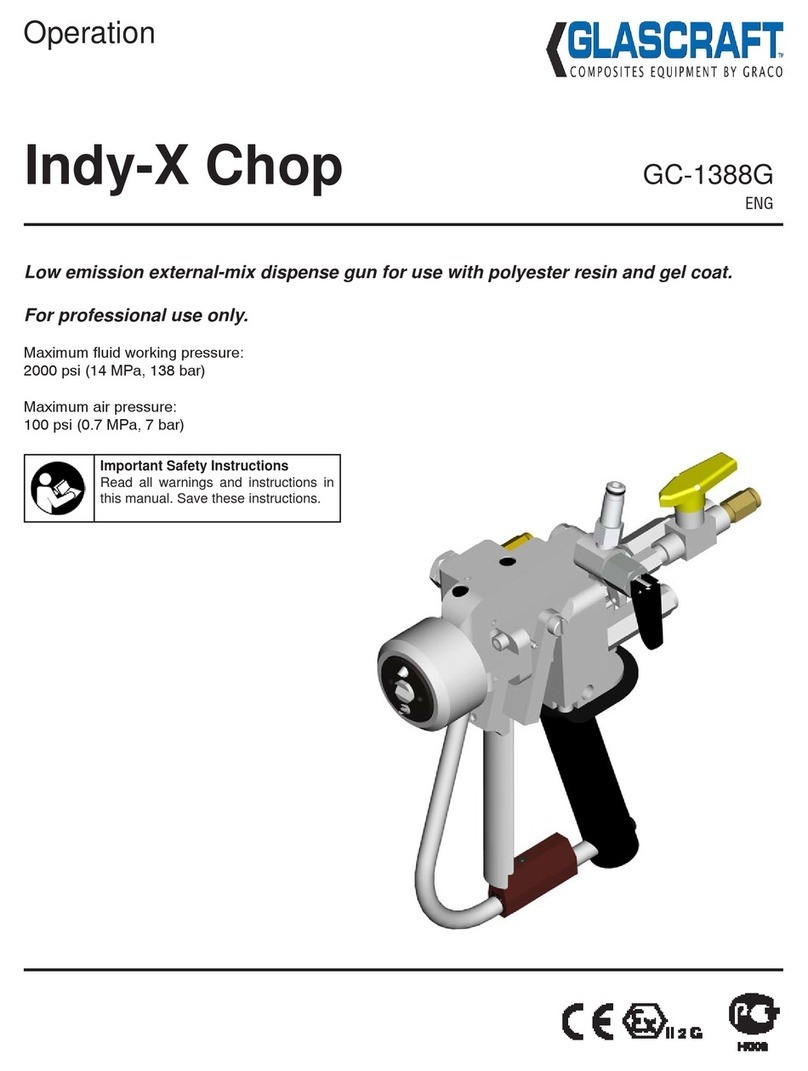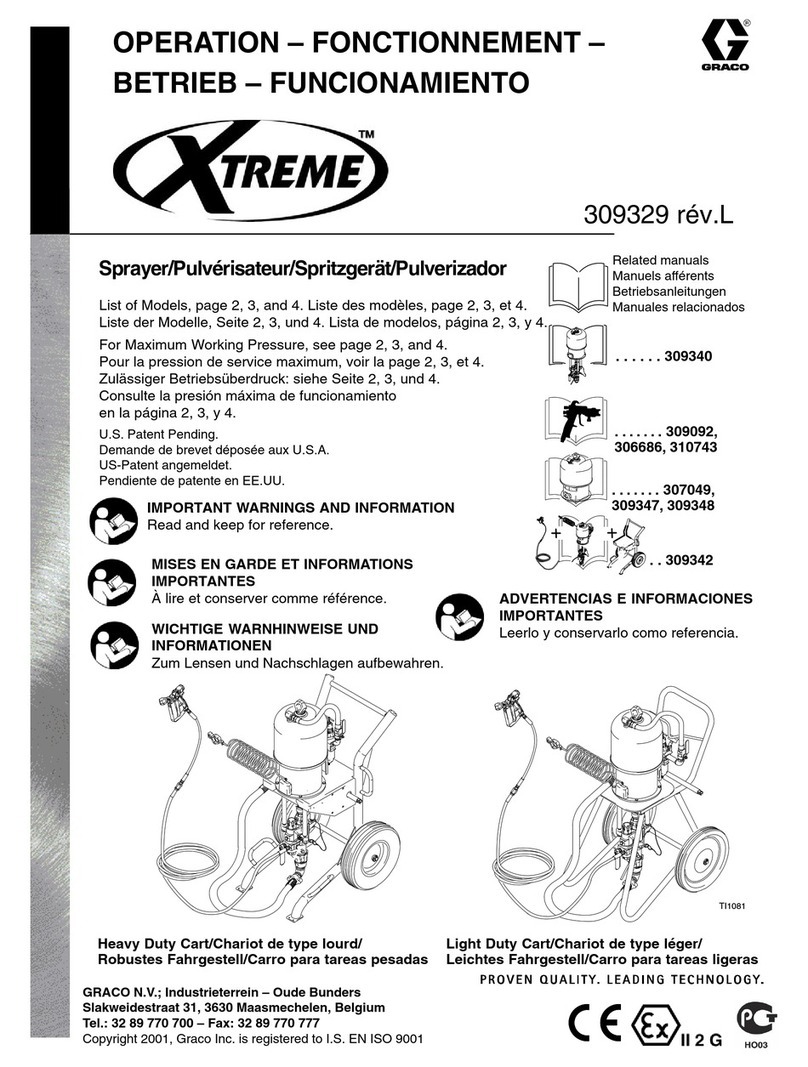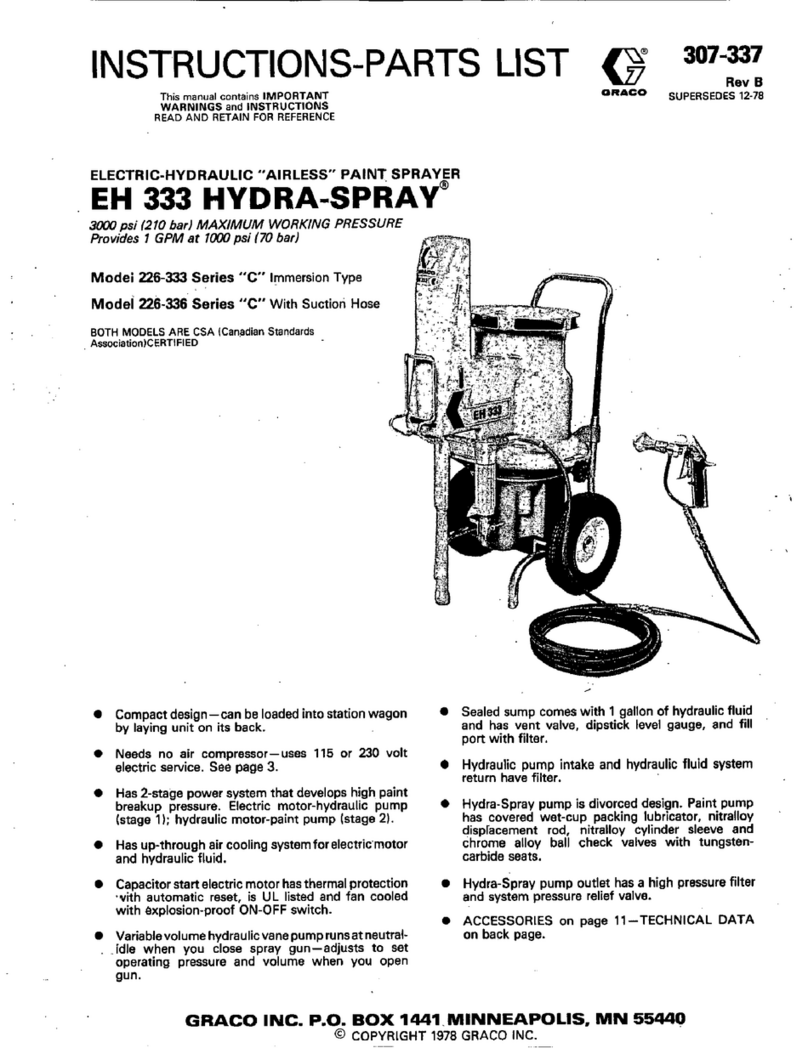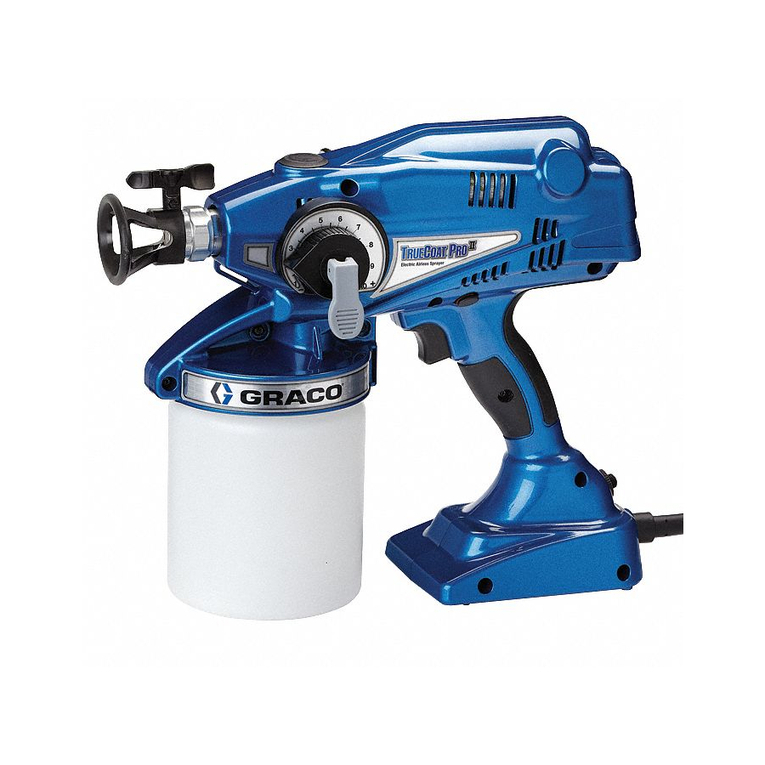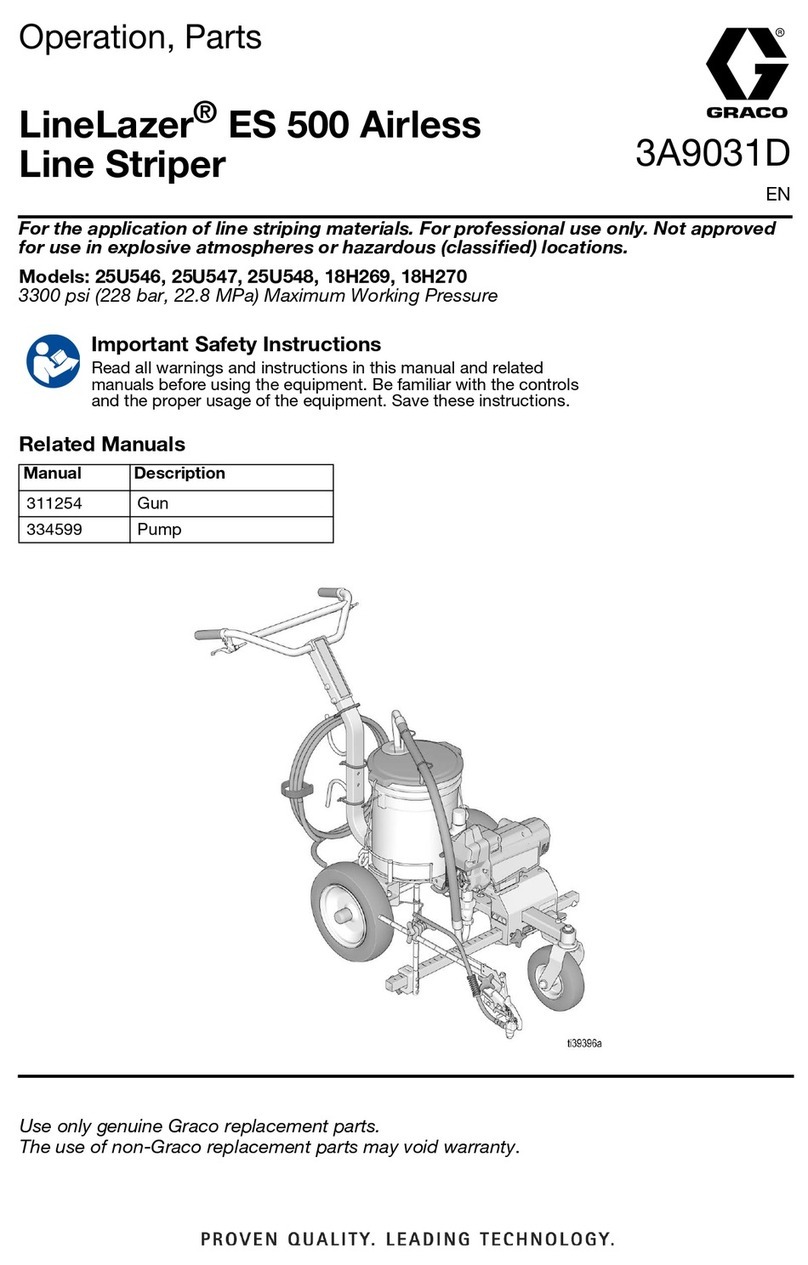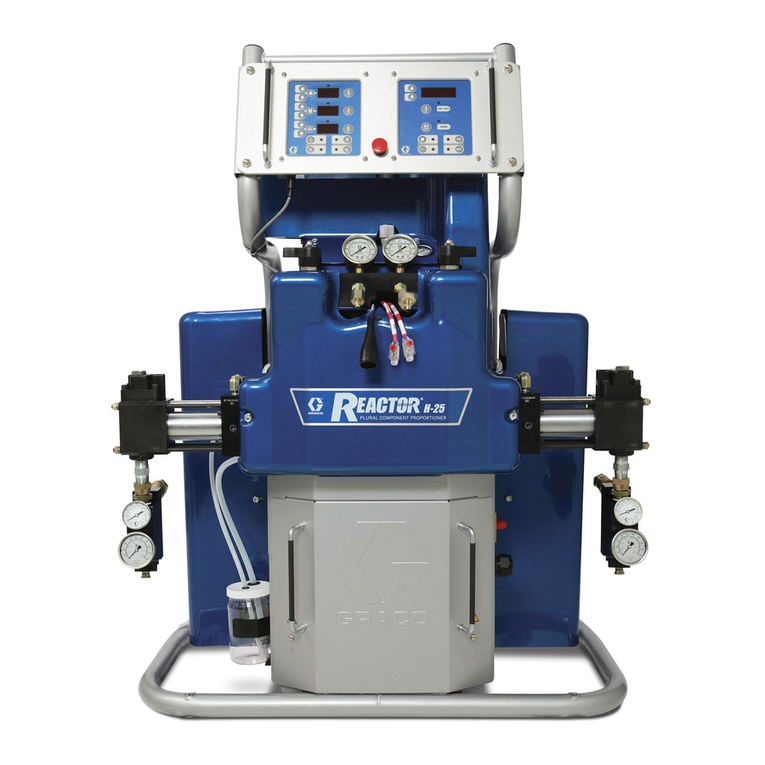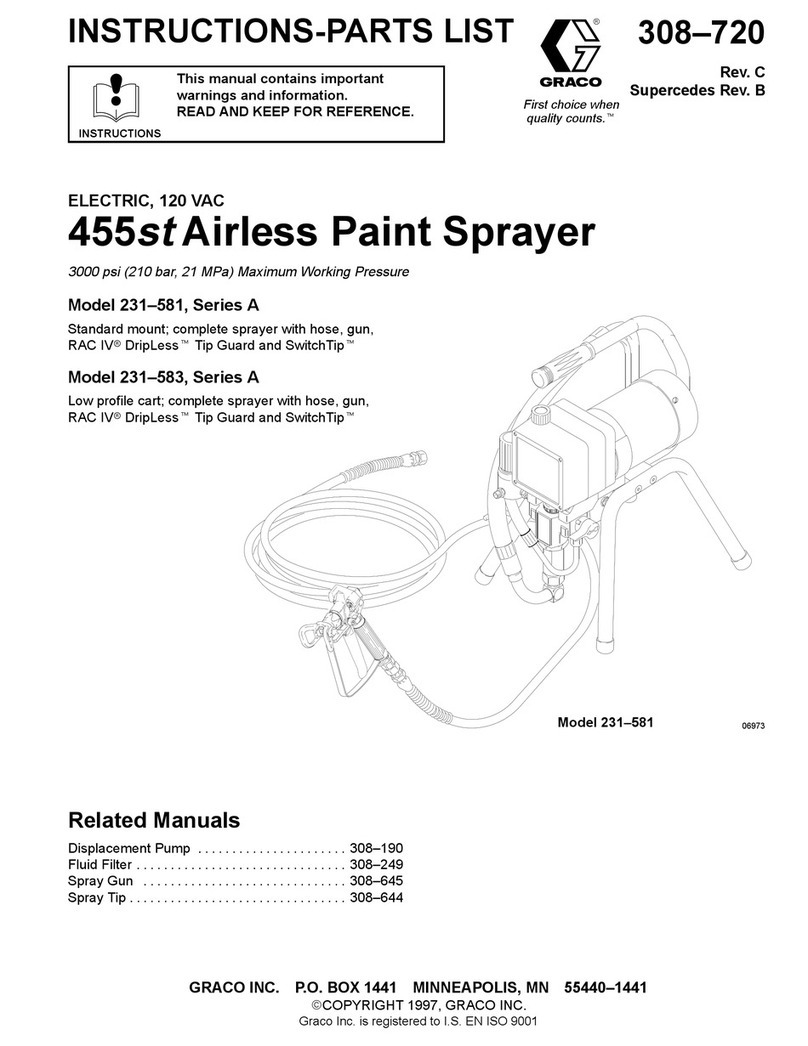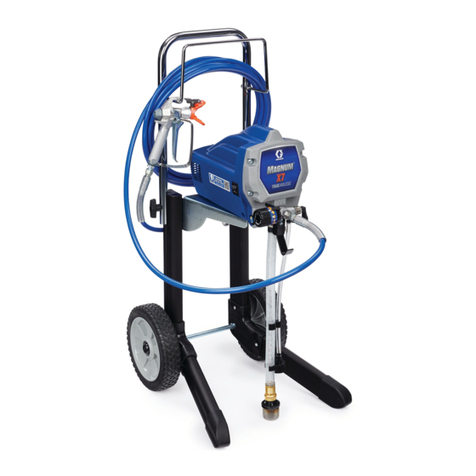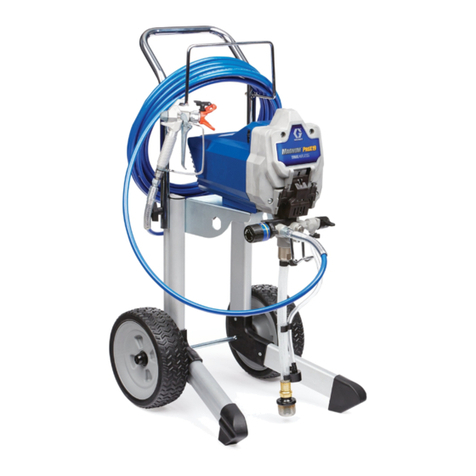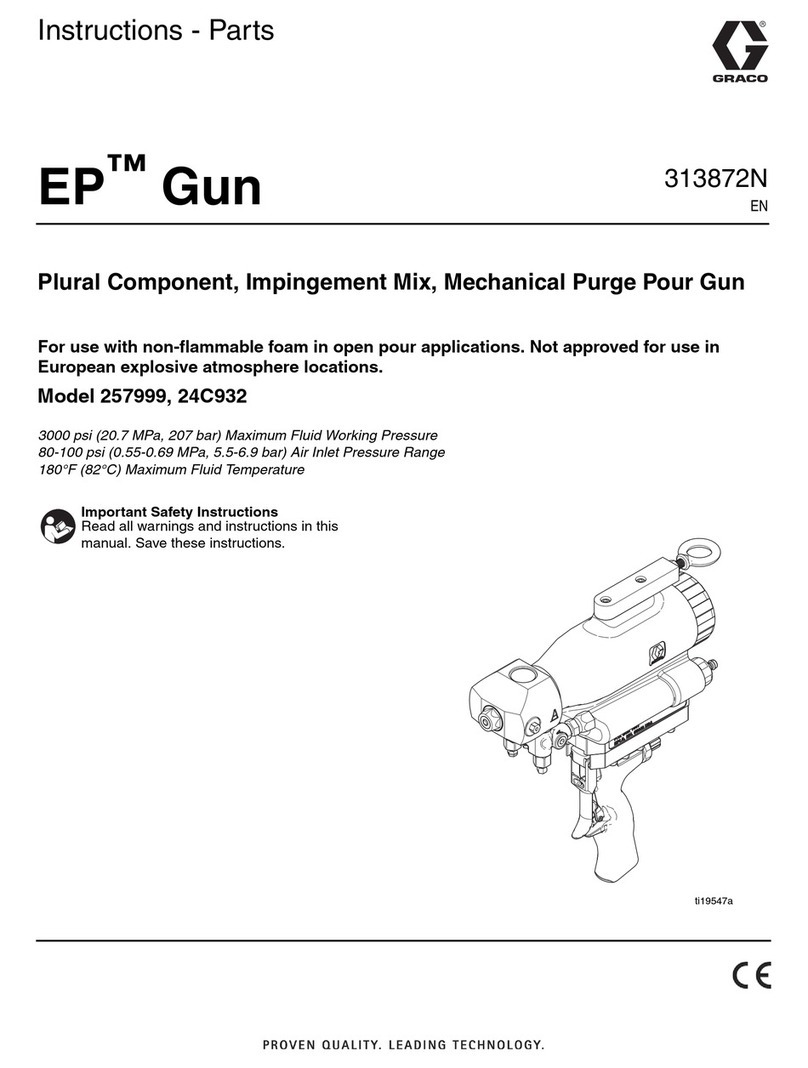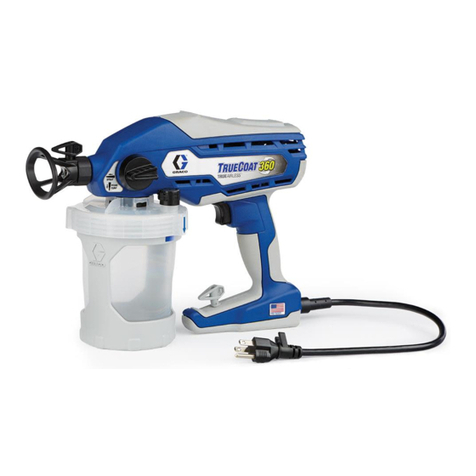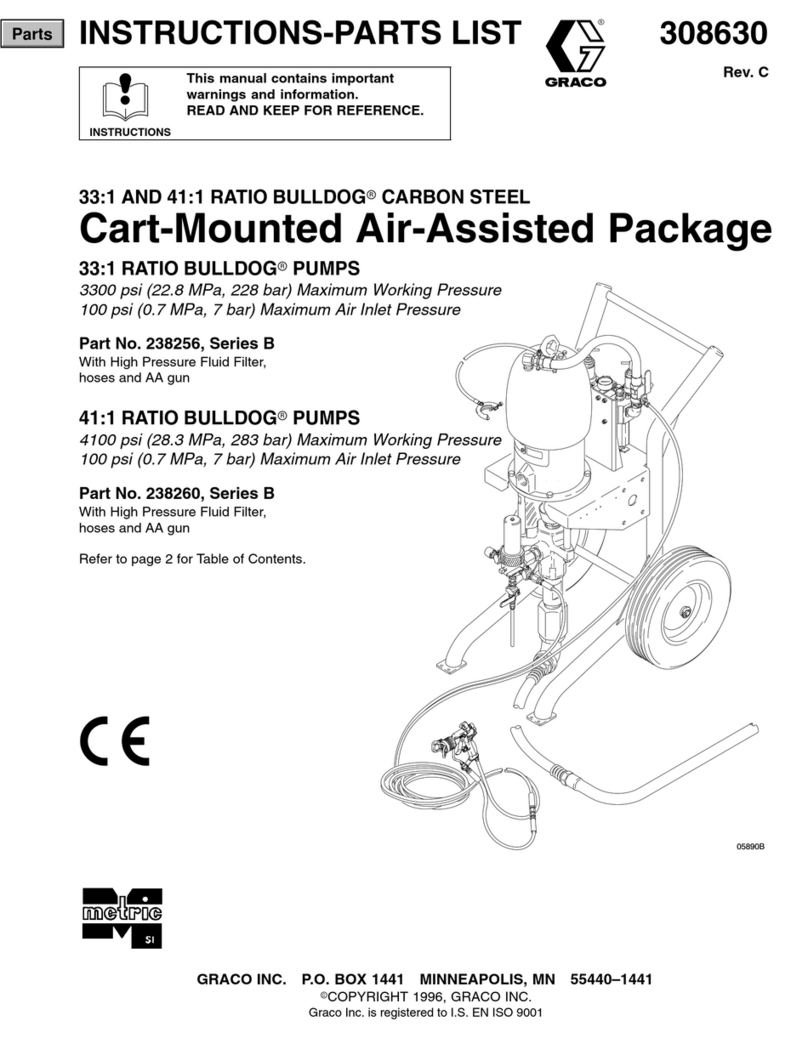MOVING PARTS HAZARD
~,~%,~~~-~
Moving parts can pinch or amputate yourfingers or other body
parts. KEEP CLEAR of moving parts when starting or operating
the sprayer. Follow the Pressure Rellet Procedure
on
page
2
before checking or servicing any part of the sprayer, to prevent
it from starting accidentally.
EQUIPMENT MISUSE HAZARD
EE%%
General
Safety
Any misuse of the spray equipment or accessories, such as
calsandfluids,orusingwornordamagedparts,cancausethem
overpressurizing. modifying parts, using incompatible chemi-
toruptureandresultinfluidinjection,splashingintheeyesoron
theskin,orotherseriousbodilyinjury,orfire,explosionorprop-
erty damage.
NEVER alter or modify any part
of
this equipment; doing
so
could cause
it
to malfunction.
CHECKallsprayequipmentregularlyandrepairorreplaceworn
or damaged parts immediately.
Alwayswearprotectiveeyewear,gloves,clothingandrespirator
as recommended by the fluid and solvent manufacturer.
Thissprayercandevelop2750psi(195bar)MAXlMUMWORK-
System Pressure
/NGPRESSURE.Besurethatallsprayequipmentandaccesso-
themaximumworkingpressureofanycomponentoraccessory
lies used are rated to withstand this pressure.
DO
NOT exceed
used in the system.
Fluid
and
Solvent Compatibility
BE SURE that all fluids and solvents used are chemically com-
patiblewiththewettedpartsshownintheTECHNICALDATAon
ture before using them in this sprayer.
page32.Alwaysreadthefluidandsolventmanufacturer'sI~era-
Do
not use l,l,l-trichloroethane, methylenechloride. otherha-
vents in this equipment, which contains aluminum andlor zinc
logenated hydrocarbon solvents or fluids containing such
sol-
parts. Such use could result in a serious chemical reaction, with
the possibility of explosion, which could cause death, serious
bodily injury andlor substantial property damage.
HOSE SAFETY
:::~~.r
~~,~,~,,,,,~~~,~~.....;..-..."",r~,~
.~i~,~.~~",~.~l;i",~
.
-"-e
High pressure fluid in the hoses can be very dangerous.
If
the
hose develops a leak, split or rupture due to any kind of wear,
damage or misuse, the high pressure spray emitted from
it
can
cause a fluid injection injuty or other serious bodily injuty or
property damage.
ALLFLUIDHOSESMUSTHAVESPRINGGUARDSONBOTH
at or close
to
the coupling which can result in hose rupture.
ENDSlSpringguardshelpprotectthehosefromkinksorbends
TIGHTEN all fluid connections securely before each use. High
pressurefluidcan dislodgea loose coupling orallow high pres-
sure spray to be emitted from the coupling.
NNERuseadamagedhose.Beforeeachuse,checktheentire
hose for cuts, leaks, abrasion, bulging cover, or damage or
movementofthehosecouplings.Ifanyoftheseconditionsexist,
sure hose or mend it with tape or any other device.
A
repaired
replacethehoseimmediately.DON0Ttrytorecouplehighpres-
hose cannot contain the high pressure fluid.
HANDLE AND ROUTE HOSES CAREFULLY
Do
not puli
on
and hot surfaces ofthe pump and
gas engine.
Do
not use fluids
hoses to move equipment. Keep
hoses clear
of moving parts
or solvents which are not compatible with the inner tube and
coverofthe hose. DONOTexposeGraco hosetotemperatures
above 180° F
(82"
C) or below
-40"
F
(-40'
C).
Hose
Grounding Continuity
Proper hose grounding continuity is essential to maintaining a
fluidhosesatleastonceaweek.1fyourhosedoesnothaveatag
groundedspraysystem. Checktheelectrical resistanceof your
on
itwhich specifiesthemaximum electrical resistance, contact
the hose supplier or manufacturer for the maximum resistance
limits. Use a resistance meter in the appropriate range for your
ommended limits. reolace it immediatelv. An unarounded or
hose to check the resistance.
If
the resistance exceeds the rec-
,,*,
:,,.*...
poorly grounded
hose
can make your syetem haz;?rdous.
Also
read
FIRE
OR
EXPLOSION
HAZARD.
Staticelectricityiscreatedbytheflowoffiuidthroughthepump
and hose.
If
every part of the spray equipment is not properly
grounded, sparking may occur, and the system may become
hazardous. Sparking may also occur when plugging in or un-
pluggingapowersupplycord.Sparkscanignitefumesfromso1-
vents and the fluid being sprayed, dust particles and otherflam-
mable substances, whether you are spraying indoors
or
outdoors, and can cause afire or explosion and serious bodily
injury and property damage. Plug the sprayer into
a
grounded
outlet at least
20
n.
(6
m) from the sprayer.
Ifyouexperienceanystaticsparkingorevenaslightshockwhile
the entire system for proper grounding.
Do
not use the system
usingthisequipment,STOPSPRAYlNGIMMEDIATELY.Check
again until the problem has been identified and corrected.
To reduce the risk of static sparking, ground the sprayer and all
Grounding
other spray equipment used or located in the spray area.
tionsfor your area and
type
of
equipment.
BE
SURE to ground
CHECKyourlocaleiectricalcodefordetailedgroundinginstruc-
ail
of
this spray equipment:
1.
Sprayer:plugintoaproperlygroundedoutlet.Donotusean
for at
least
15
amps.
adapter.Exiensioncordsmusthavethreewiresandberated
2
Fluid
hoses: use only grounded hoses with a maximum of
150mcombinedhoselengthtoensuregroundingcontinu-
ily.
See Hose Groundlng Contlnulty.
3.
Spraygun: obtain grounding through connection to a prop-
erly grounded fluid hose and sprayer.
4.
Object being sprayed: according to local code
5.
Fluid
supply container: according
to
local code.
6.
Allsolventpailsusedwhenflushing,
accordingtolocalcode.
Useonlymetalpails,whichareconduciive.Donotplacethe
pail
on
a
non-conductive surface, such as paper or card-
board, which interrupts the grounding continuity.
7.
To
maintain grounding continuity when flushing orrelieving
pressure, always hold a metal part
of
the gun firmly to the
side of
a
grounded metal pail, then trigger the gun.
Flushing Safety
Reducetheriskoffluidinjectioninjuty,staticsparking,orsplash-
ing by following the flushing procedure given
on
page
13
ofthis
manual. Follow the Pressure Relief Procedure
on
page
2,
and
firmly to the side of a grounded metal pail and use the lowest
removethespraytipbeforefiushing.Ho1dametaipartofthegun
possible fluid pressure during flushing.
IMPORTANT
United States Government safety standards have been adopted under the Occupational Safety and Health Act. These standards
-
particularly the General Standards, Part
1910,
and the Construction Standards, Part 1926
-
should be consulted.
308-248
3
